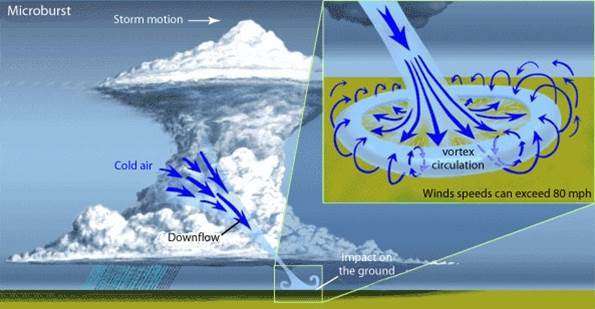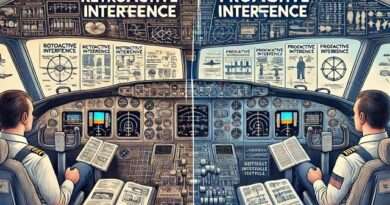Microburst Mayhem: Unpacking the Aviation Threat
Imagine a hidden pocket of hurricane-force winds tucked within a seemingly harmless thunderstorm. That’s essentially a microburst, a small-scale downdraft with the power to disrupt even the most seasoned pilot’s plans. These compact pockets of fury, typically under 2.5 miles wide, pose a significant threat to aircraft, making understanding their nature and impact crucial for aviation safety.
Microburst: The Downdraft Dynamo
Intense Winds: Picture a massive air waterfall plummeting to Earth, creating downward winds exceeding 100 mph. That’s a microburst in action, capable of generating wind speeds comparable to a Category 2 hurricane.
Dual Threat: Microbursts come in two flavors: wet and dry. Wet microbursts cool rapidly due to rain evaporation, while dry ones are driven by pure gravity, both packing an equally dangerous punch.
Turbulence Terror: Imagine riding a rollercoaster blindfolded – that’s what flying through a microburst feels like. Severe turbulence throws planes around, jeopardizing control and stability.
Why Microbursts Matter: A Pilot’s Nightmare
Takeoff Troubles: During takeoff, a microburst’s downdraft can rob an aircraft of crucial lift, hindering its climb and potentially stalling it. This makes microbursts particularly dangerous during this critical phase of flight.
Landing Mayhem: Encountering a microburst on approach can turn a smooth landing into a white-knuckle experience. Increased drag and reduced lift make stopping a delicate dance, demanding exceptional piloting skills.
Ground Hazard: Even on the ground, microbursts can whip up damaging winds, tossing debris and posing a danger to personnel and equipment. This makes microburst awareness crucial for ground crew and airport operations.

Navigating the Storm: Piloting Through Microbursts
Microbursts are notoriously difficult to detect, often hiding within larger thunderstorms. However, pilots are trained to recognize warning signs like:
- Rapid wind shifts
- Sudden changes in cloud density
- Hail or heavy rain
- Bird activity around the storm’s edge
Armed with this knowledge and sophisticated onboard weather radar, pilots can:
Avoid the Core: By skirting the edges of thunderstorms, pilots can minimize their risk of encountering a hidden microburst. (Deviation from route)
Go-Around Gumption: If caught in a microburst’s grip, pilots are trained to initiate immediate go-around procedures, gaining altitude and escaping the downdraft’s clutches.
Staying Alert: Vigilance is key. Pilots constantly monitor weather conditions and rely on air traffic control updates to stay informed about potential microburst activity.
Microbursts: A Force to be Reckoned With
While relatively small, microbursts pack a powerful punch. Understanding this hidden aviation threat and the measures taken to combat it allows us to appreciate the skill and vigilance of pilots who navigate these turbulent skies to keep us safe. So, the next time you hear thunder rumble, remember, a silent microburst might be lurking – but so too are the trained professionals ready to face it head-on.
Further Reading and References
National Weather Service: https://www.noaa.gov/jetstream/wind_damage
SKYbrary Aviation Safety: https://journals.ametsoc.org/view/journals/bams/103/12/BAMS-D-22-0038.1.xml
Federal Aviation Administration: https://www.faa.gov/regulations_policies/handbooks_manuals/aviation (Chapter 9: Adverse Weather)
Flight Safety Foundation: https://journals.ametsoc.org/view/journals/bams/103/12/BAMS-D-22-0038.1.xml
Airbus Safety First: https://d10x.airbus.com/article-on-windshear/
AeroTime: https://www.cfinotebook.net/notebook/weather-and-atmosphere/microbursts
Image source – https://www.weather.gov/bmx/outreach_microbursts


